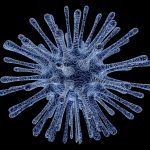
Artificial neural networks (ANN) have found their way as an application into food manufacture, food safety, microbiology and the the supply chain. In fact they may be the only route to managing the most challenging and complex mathematical models of our time. You might ask what on earth is an artificial neural network?
ANN is purely and simply a highly interconnected network. The neural element refers to that extensiveness of interconnection as if it was a nervous system. It consists of many simple processing elements which are capable of performing massive parallel computations for data processing. So in many ways, the network is an attempt to mimic the methods of information processing that happens in the brain. The great advantage is that because it is an interconnected network, it can handle multiple independent and dependent variables simultaneously without having prior knowledge about the functional relationship.
The processing style for an ANN is parallel so there is no strict rule or algorithm to follow. The traditional mathematical methods are sequential and logical. These particular methods rely on rules to be learnt. The ANN learns by examples and because of this ability are also known as universal function approximators (Anjum et al., 1997).
A good early review on the subject was provided by Najjar et al., (1997) who reviewed its application in predictive microbiology. In some early literature they are called computational neural networks (CNN).
Artificial Neural Networks And Microbiology
Mathematical predictive modelling of the growth of microorganisms can be a complicated affair. There are a number of environmental factors to consider and then try to relate them to the experimentally determined rates of growth that are actually observed. We mentioned the review by Najjar et al., (1997) which is worth using as an introduction to this subject.
Earlier modelling has in the past been based on regression modelling. When it comes to mathematical modeling, ANN has no restrictions on the type of relationship that governs the dependence of growth parameters.
In early studies, regression-based response models needed the order of the model to be explicitly stated. So it might be second order, third order and so on (Hajmeer et al., 1997). With ANN, one of the key advantages is that no restriction is imposed on the relationship that governs the dependence of the growth parameters on various running conditions. In this instance, an artificial neural network implicitly matches the input vector which are the growth conditions to the output vector which in microbial growth are the kinetic parameters.
Artificial Neural Networks And Sensory Science
ANN has been used to construct non-linear regression models between sensory evaluation data and instrumental analysis. These have then been used for constructing sensory models (Wilkinson & Yuksel, 1997; Bomio, 1998).


Leave a Reply